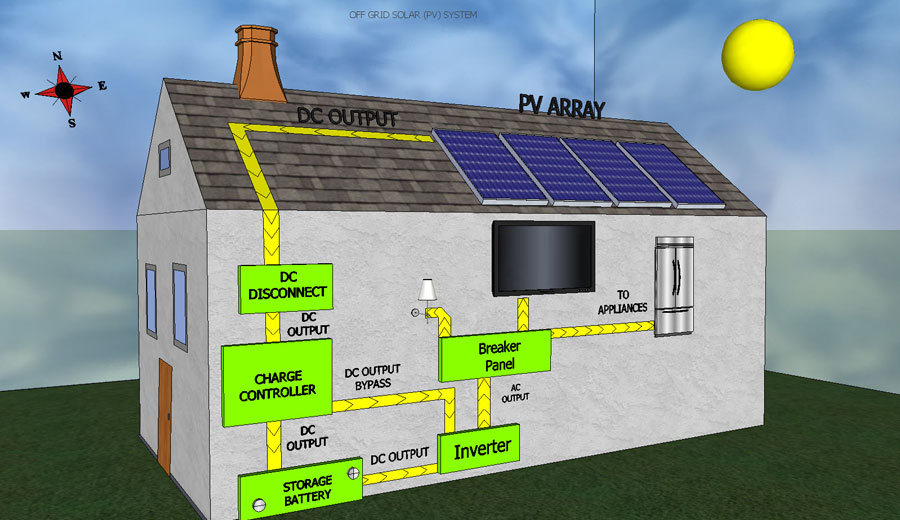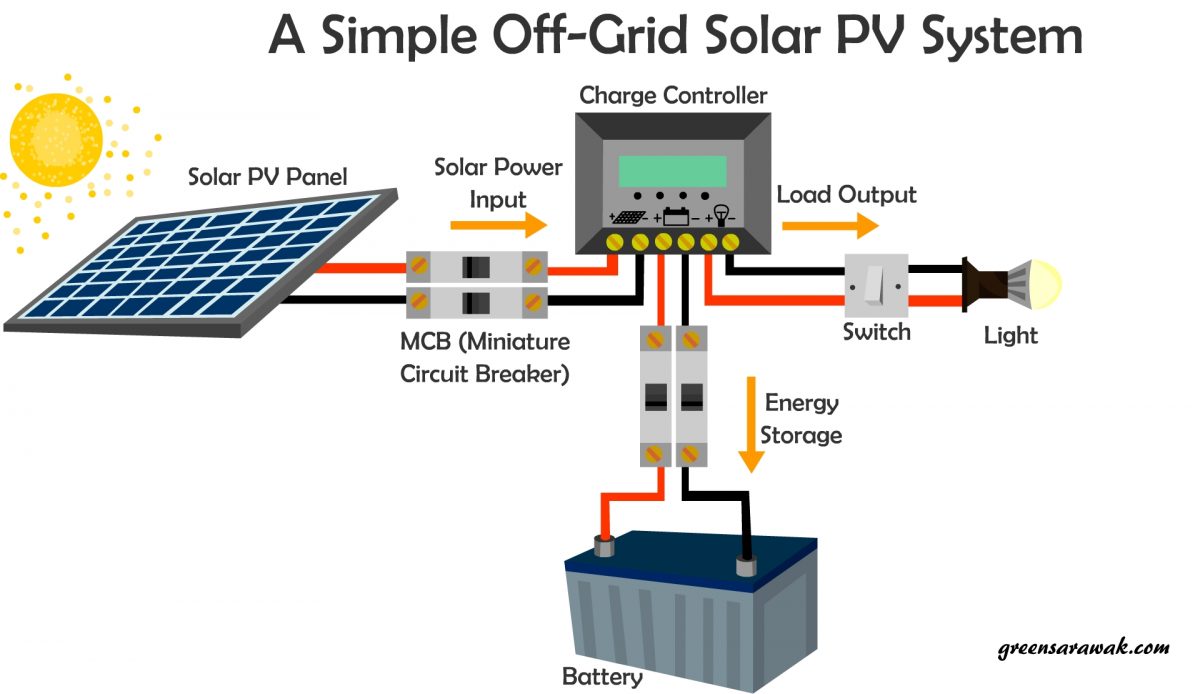Standalone Solar Power System Wiring For House
“Standalone solar power system wiring for house”
A standalone solar power system, also known as an off-grid solar system, is a great option for homes that are not connected to the grid or want to have a backup power source. In this article, we will delve into the world of standalone solar power system wiring for houses, providing a comprehensive guide on how to design and install a safe and efficient system.
Introduction to Standalone Solar Power Systems
A standalone solar power system consists of solar panels, a charge controller, a battery bank, and an inverter. The solar panels generate DC power, which is then sent to the charge controller to regulate the energy flow to the battery bank. The battery bank stores excess energy generated during the day for use at night or during periods of low sunlight. The inverter converts the DC power from the battery bank to AC power, which is then used to power the home.
Wiring Requirements for Standalone Solar Power Systems
The wiring requirements for a standalone solar power system are critical to ensure safe and efficient operation. The system must be designed to handle the maximum power output of the solar array, as well as the maximum charging and discharging currents of the battery bank. The wiring system should also be designed to minimize energy losses and ensure that the system can operate safely in the event of a fault.
Solar Panel Wiring
The solar panel wiring is a critical component of the standalone solar power system. The solar panels are typically connected in series and parallel combinations to achieve the desired voltage and current output. The wiring between the solar panels and the charge controller should be sized to handle the maximum power output of the solar array.
- Series Connection: When connecting solar panels in series, the voltage of each panel is added together, while the current remains the same. For example, if two solar panels are connected in series, each with a voltage of 12V, the total voltage output would be 24V.
- Parallel Connection: When connecting solar panels in parallel, the current of each panel is added together, while the voltage remains the same. For example, if two solar panels are connected in parallel, each with a current of 5A, the total current output would be 10A.

Charge Controller Wiring
The charge controller is responsible for regulating the energy flow between the solar panel array and the battery bank. The charge controller should be connected between the solar panel array and the battery bank, with the wiring sized to handle the maximum charging current.
- Input Wiring: The input wiring from the solar panel array to the charge controller should be sized to handle the maximum power output of the solar array.
- Output Wiring: The output wiring from the charge controller to the battery bank should be sized to handle the maximum charging current.

Battery Bank Wiring
The battery bank is a critical component of the standalone solar power system, providing a storage medium for excess energy generated during the day. The battery bank should be wired in a configuration that allows for efficient charging and discharging.
- Series Connection: When connecting batteries in series, the voltage of each battery is added together, while the capacity (Ah) remains the same. For example, if two batteries are connected in series, each with a voltage of 12V and a capacity of 200Ah, the total voltage output would be 24V and the capacity would remain 200Ah.
- Parallel Connection: When connecting batteries in parallel, the capacity (Ah) of each battery is added together, while the voltage remains the same. For example, if two batteries are connected in parallel, each with a voltage of 12V and a capacity of 200Ah, the total capacity would be 400Ah and the voltage would remain 12V.

Inverter Wiring
The inverter is responsible for converting the DC power from the battery bank to AC power, which is then used to power the home. The inverter should be connected between the battery bank and the electrical panel, with the wiring sized to handle the maximum power output.
- Input Wiring: The input wiring from the battery bank to the inverter should be sized to handle the maximum power output of the battery bank.
- Output Wiring: The output wiring from the inverter to the electrical panel should be sized to handle the maximum power output of the inverter.
Electrical Panel Wiring
The electrical panel is the main distribution point for the AC power generated by the inverter. The electrical panel should be wired to handle the maximum power output of the inverter, with the wiring sized to handle the maximum current.
- Main Breaker: The main breaker should be sized to handle the maximum power output of the inverter, with a minimum rating of 100A.
- Branch Circuits: The branch circuits should be wired to handle the maximum power output of each individual circuit, with the wiring sized to handle the maximum current.
Safety Considerations
When designing and installing a standalone solar power system, safety should be the top priority. The system should be designed to minimize the risk of electrical shock, fire, and other hazards.
- Grounding: The system should be properly grounded to prevent electrical shock and ensure safe operation.
- Overcurrent Protection: The system should be equipped with overcurrent protection devices, such as fuses or circuit breakers, to prevent damage from overcurrent conditions.
- Surge Protection: The system should be equipped with surge protection devices, such as transient voltage surge suppressors (TVSS), to prevent damage from voltage surges.
Conclusion
In conclusion, standalone solar power system wiring for houses requires careful planning and design to ensure safe and efficient operation. The system should be designed to handle the maximum power output of the solar array, as well as the maximum charging and discharging currents of the battery bank. The wiring system should be designed to minimize energy losses and ensure that the system can operate safely in the event of a fault. By following the guidelines outlined in this article, homeowners can design and install a standalone solar power system that meets their energy needs and provides a safe and reliable source of power.
Recommendations
- Always hire a licensed electrician to design and install a standalone solar power system.
- Ensure that the system is properly grounded and equipped with overcurrent protection devices.
- Use high-quality components and follow the manufacturer’s instructions for installation and maintenance.
- Regularly inspect and maintain the system to ensure safe and efficient operation.
Future Developments
As the technology continues to evolve, we can expect to see more efficient and cost-effective standalone solar power systems. Some of the future developments that are expected to shape the industry include:
- Advanced Inverters: More efficient and advanced inverters that can handle multiple input sources and provide higher power output.
- Energy Storage Systems: More efficient and cost-effective energy storage systems, such as lithium-ion batteries, that can store excess energy generated during the day for use at night or during periods of low sunlight.
- Smart Grid Technology: Advanced smart grid technology that can integrate standalone solar power systems with the grid, providing a more efficient and reliable source of power.
By embracing these future developments, we can create a more sustainable and efficient energy system that meets the needs of homeowners and reduces our reliance on fossil fuels.
